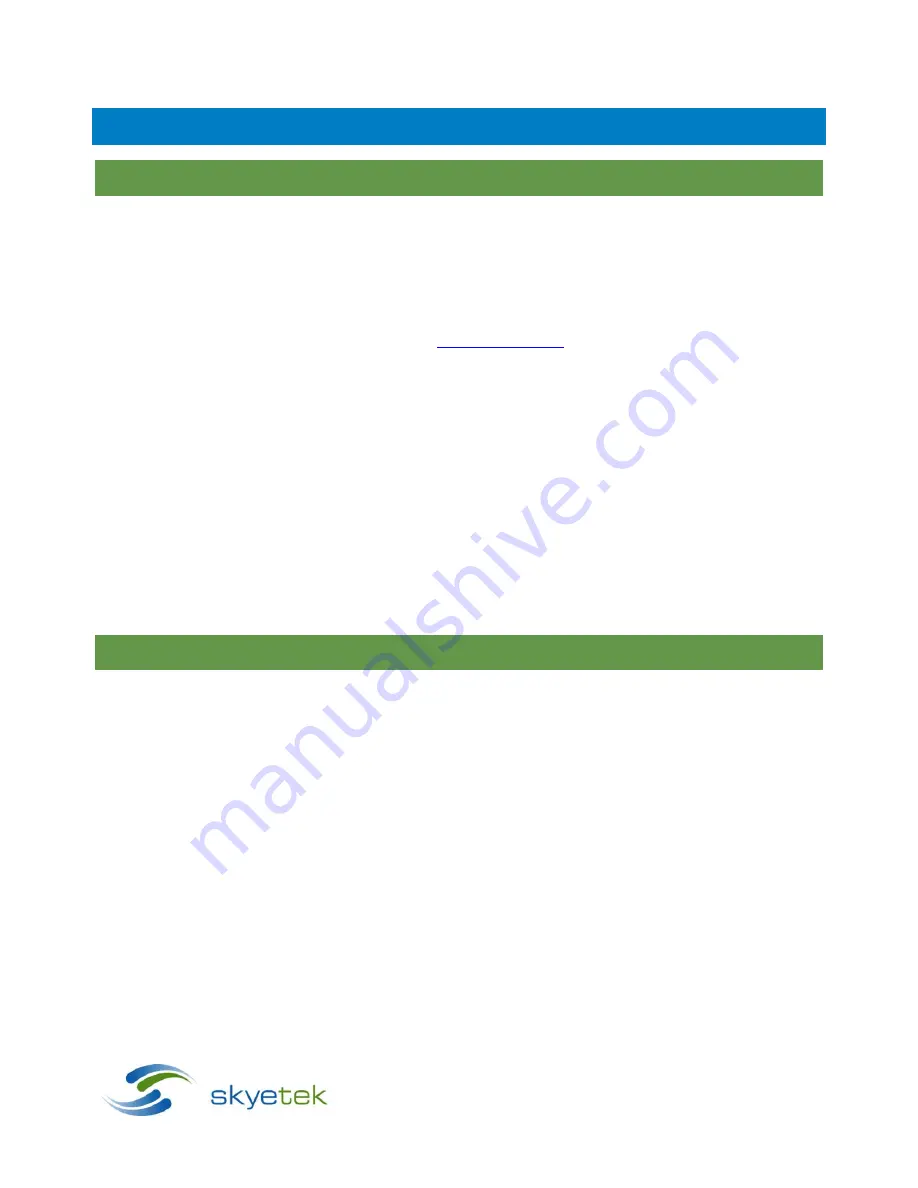
SkyeModule Nova Datasheet
-
Preliminary
Page
|
7
Skyetek Inc
1415 Larimer Street, Suite 207
Denver, CO 80202
www.skyetek.com
Main 720.328.3425 Fax:720.228.2400
1
Introduction
1.1
Getting Started
Operating your SkyeModule Nova begins with finding a method to connect to a host
. The SkyeModule itself does
not operate without direction (commands) from a host. The host can be in the form of a PC or, more typically, an
embedded microcontroller. This document explains the physical and electrical characteristics of the module, so
you can understand how to integrate the Nova into a finished product.
For
initial demonstration
of the module,
SkyeWare
v4
software
is available on the media that came with the
developer/evaluation kit or available for download at
support.skyetek.com
. Open this software on your windows
PC and it will be recognized when you connect through USB or RS232 (with developer kit interface board). The
software demonstrates features like selecting tags, reading and writing. It also has a powerful command builder
that lets you format, send and receive any command to and from the reader. More about SkyeWare can be found
in the SkyeWare User Guide. See the Additional Reading section below.
The
next step
after
demonstrating the module’s functionality
is
developing your own
communication with the
module
. This can be achieved with simple code on a microcontroller or using the SkyeTek API on a PC. Once
connected to a host through one of the four host interfaces, the reader to host communication is formatted with a
full featured protocol called SkyeTek Protocol v3. In order to make learning commands and formatting easy, we
have developed a series of application notes with examples to get you started. The application notes start with
basic tag and reader commands and become very detailed for tags with special features. Read more about the
protocol and commands in section 12, Communicating with the Module and then move on to the Additional
Reading in section 1.3.
1.2
Why a SkyeTek Module?
Many customers may wonder,
“
What value does a module add over an
RFID transceiver chip?”
RFID transceiver chips may seem simple, but they actually require significant engineering time and capital
investment to integrate. Transceiver chips contain up to 50 registers for configuration and functionality. In
addition, communicating over air protocols such as ISO18000-6C is complex, described in nearly 150 pages of
cryptic procedures. For example, just selecting a tag requires a minimum of 6 and up to 100 over air interactions
with multiple tags present. SkyeTek has also optimized the complex RF chain to give the best performance and
efficiency possible.
SkyeTek modules mask the complexities of RFID from the user and pack functionality into
just a few commands.
SkyeTek’
s core set of commands allow the user to read and write to tags with a single command, regardless of the
tag type. The module is also field upgradable, so you can use the latest security algorithms and tag features as they
are released. Power regulation and filtering for the radio are handled in the Nova, so you can supply voltage
directly from an unregulated source like a battery. Finally, the Nova will be modularly approved by the FCC and CE,
so you can bypass expensive radio testing at a certified test lab and avoid potential schedule delays due to failures.
Using a SkyeTek module will greatly reduce time to market and upfront development costs.
Allow SkyeTek to
take the burden of developing an RF system so you can focus your energy on your core products.








































